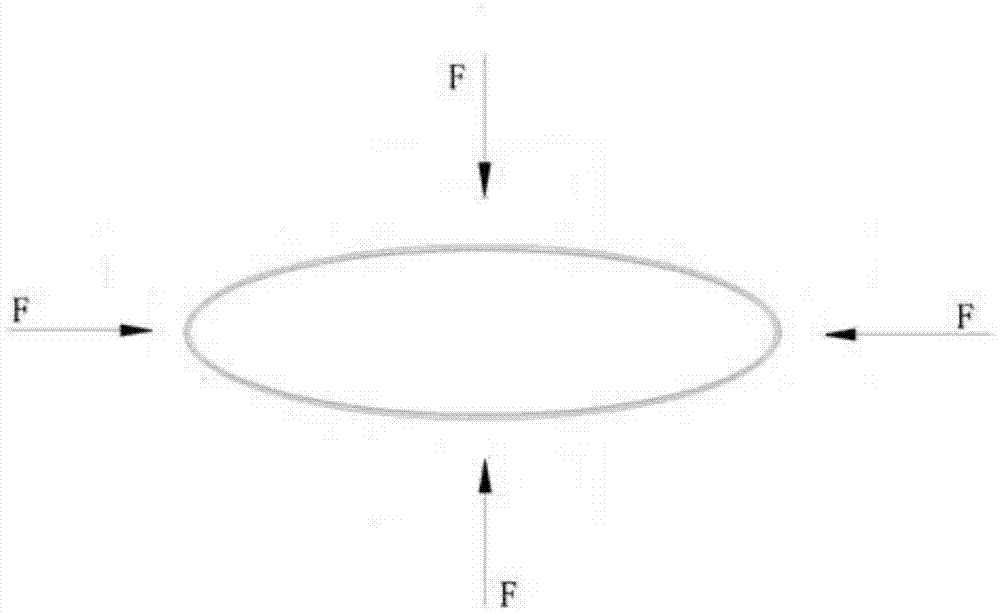Method for preparing composite ceramic membrane on surface of magnesium alloy intravascular stent by micro-arc oxidation
A technology of magnesium alloy blood vessels and composite ceramic membranes, which is applied in the direction of stents, anodic oxidation, coating, etc., can solve problems such as unsatisfactory requirements, and achieve the effect of improving fracture toughness
- Summary
- Abstract
- Description
- Claims
- Application Information
AI Technical Summary
Problems solved by technology
Method used
Image
Examples
Embodiment 1
[0035] This embodiment includes the following steps:
[0036] Step 1. Use deionized water as the solvent to prepare the electrolyte solution, adjust the pH of the electrolyte solution to 10 with ammonia water, and then place the electrolyte solution in an ultrasonic cleaner for ultrasonic treatment for 4 hours to disperse the components evenly before use; The liquid includes 15g of ammonium fluozirconate, 13g of sodium pyrophosphate, 11g of trisodium phosphate, 3g of ammonium citrate, 8g of nano zirconium dioxide powder, and 3g of ammonium cerium nitrate;
[0037] Step 2. Place the magnesium alloy stent to be treated in the electrolyte after ultrasonic treatment in Step 1 as the anode, use the stainless steel plate as the cathode, and use the stainless steel wire covered with an insulating plastic film as the auxiliary cathode to control the electrolyte. The temperature is 35°C, the pulse frequency of the micro-arc oxidation power supply is adjusted to 650Hz, the duty cycle is...
Embodiment 2
[0042] This embodiment includes the following steps:
[0043] Step 1. Use deionized water as the solvent to prepare the electrolyte, adjust the pH of the electrolyte to 8 with ammonia water, and then place the electrolyte in an ultrasonic cleaner for ultrasonic treatment for 2 hours to make the components evenly dispersed before use; The liquid includes 10g of zirconium hydroxide, 10g of sodium pyrophosphate, 8g of trisodium phosphate, 2g of ammonium citrate, 5g of nano zirconium dioxide powder, and 2g of ammonium cerium nitrate;
[0044] Step 2. Place the magnesium alloy stent to be treated in the electrolyte after ultrasonic treatment in Step 1 as the anode, use the stainless steel plate as the cathode, and use the stainless steel wire covered with an insulating plastic film as the auxiliary cathode to control the electrolyte. The temperature is 20°C, the pulse frequency of the micro-arc oxidation power supply is adjusted to 300Hz, the duty cycle is 40%, and the voltage is 3...
Embodiment 3
[0047] This embodiment includes the following steps:
[0048] Step 1. Use deionized water as a solvent to prepare an electrolyte, adjust the pH of the electrolyte to 12 with ammonia water, and then place the electrolyte in an ultrasonic cleaner for ultrasonic treatment for 5 hours to disperse the components evenly before use; The liquid includes 20 g of zirconium carbonate, 15 g of sodium pyrophosphate, 15 g of trisodium phosphate, 5 g of ammonium citrate, 10 g of nanometer zirconium dioxide powder, and 5 g of ammonium cerium nitrate;
[0049] Step 2. Place the magnesium alloy stent to be treated in the electrolyte after ultrasonic treatment in Step 1 as the anode, use the stainless steel plate as the cathode, and use the stainless steel wire covered with an insulating plastic film as the auxiliary cathode to control the electrolyte. The temperature is 50°C, the pulse frequency of the micro-arc oxidation power supply is adjusted to 1000Hz, the duty cycle is 10%, and the voltag...
PUM
 Login to View More
Login to View More Abstract
Description
Claims
Application Information
 Login to View More
Login to View More - R&D
- Intellectual Property
- Life Sciences
- Materials
- Tech Scout
- Unparalleled Data Quality
- Higher Quality Content
- 60% Fewer Hallucinations
Browse by: Latest US Patents, China's latest patents, Technical Efficacy Thesaurus, Application Domain, Technology Topic, Popular Technical Reports.
© 2025 PatSnap. All rights reserved.Legal|Privacy policy|Modern Slavery Act Transparency Statement|Sitemap|About US| Contact US: help@patsnap.com



